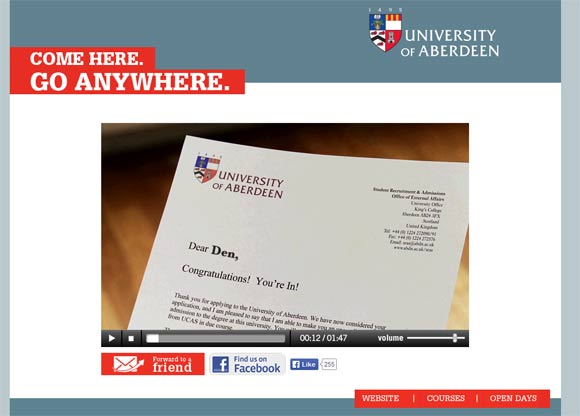
The application process is often the neglected Cinderella of the recruiting journey, so it’s no surprise it’s a common source of job seeker dissatisfaction. If a company wants to beat their rivals to recruit the best, the one thing to avoid is frustrating applicants when they try to apply. There’s one sector that’s pioneering an innovative and customer focused approach to the Cinderella of the recruiting process. And it might not be one you expect.
We’ve recently been looking at how universities reach out and help potential students, and we think they offer some fantastic lessons for corporates. The best way to show this is to share the story of one real-life student who, for the purpose of this blog, we’ll call Sally.
Sally is a student with impressive grades who’s looking for a university place in 2014. At first glance, the journey from school to undergraduate doesn’t look that different to how it’s always been, with open days to attend and application forms to complete. But although the process may look like it hasn’t changed much, intense competition for students has prompted many universities to raise their game in one key area. And that’s how universities engage with potential undergraduates.
From initial expression of interest, right through to the final decision on her application and beyond, the universities Sally contacts respond with personalised emails and SMS that engage, remind, and offer additional help. The same customer-focused approach is applied again, at Open Days, this time in person. Sally is also offered the chance to provide feedback on her experience as her application progresses, through surveys and quizzes. A feedback quiz performs several functions here. Hopefully it’s a fun way of engaging students to begin with, while also conveying a strong “We listen” message from the university. And it’s also a good way of gathering data on how well the application process is working in the target market.
The personalised communications strategy doesn’t end when Sally receives her first offer of a place at university. Remember, Sally is a student with impressive grades, and she soon has more than one offer on the table to choose from. The universities she’s applied to seem to be well aware of this. Their offer communications are also personalised and designed to engage (One simply says: “Sally – Yes!), and are accompanied by additional material on scholarships and accommodation. And if that wasn’t enough, Sally gets information on student acceptance and rejection statistics as well. Put all these personalised communications together, and there’s an obvious core message here that says: “We think you’d a great asset to have at our university, so choose our offer!”
The University of Aberdeen wasn’t one of the institutions that Sally contacted, however it does provide another great example of innovative and personalised candidate outreach. If you’d like to out what life at Aberdeen might be like, just try out their personalised video form. Don’t worry – it still works if, like me, your own undergraduate days are long distant!
Of course some people will say that there’s a difference between student outreach and candidate hiring. And they’re right. At the same time however, it’s obvious that there are strong parallels here, with academia and business both competing hard in their respective sectors to seek out and recruit the best.
We’ve only touched on a few selected aspects of how universities “recruit” in this blog, but we’re convinced the university approach offers some important lessons for online corporate recruitment.
